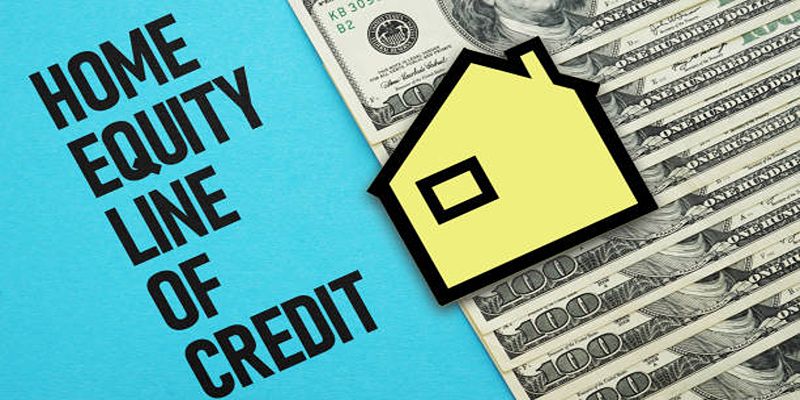Considering renovating your kitchen, tacking on a bathroom or bringing your houses into the modern century? The solution may be a Home Equity Line of Credit (HELOC). However, is it the perfect style of yours in terms of renovation? The following guide describes what a HELOC is, how it works, its advantages and disadvantages and tips to aid you to make the most effective financial choice.
What is a HELOC?

A Home Equity Line of Credit (HELOC) allows you to borrow money using the equity in your home—the difference between its current market value and your remaining mortgage balance.
For instance, if your home is valued at $400,000 and you still owe $250,000 on your mortgage, you have $150,000 in equity. With a HELOC, you can usually borrow a portion of that equity—often up to 85% of your home’s appraised values, minus what you still owe on the mortgage.
Unlike a traditional loan, a HELOC works like a revolving line of credit—similar to a credit card. During the draw period, typically lasting 5 to 10 years, you can borrow funds as needed. Once that period ends, the repayment phase begins, and you'll start paying back the borrowed amount along with interest.
Advantages of Using a HELOC for Home Renovations
Using a HELOC for home improvements comes with several benefits, making it an appealing choice for many homeowners. Here’s why it might work for you:
Flexible Access to Funds
With a HELOC, you’re not restricted to a lump-sum payment. Instead, you can withdraw the exact amount you need, when you need it, which is especially useful for renovations that happen over time. For instance, if your remodeling project spans several months, you can withdraw funds in stages rather than taking out all the money upfront.
Lower Interest Rates
HELOCs typically have lower interest rates than personal loans or credit cards since they are backed by your home. This can lead to substantial savings, especially when borrowing a large amount for a major renovation.
Potential Tax Benefits
Under certain conditions, the interest you pay on a HELOC may be tax-deductible if the funds are used for home improvements. Be sure to consult a tax professional to understand how this could apply to your specific situation.
Increase in Home Value
Investing in home renovations often increases the resale value of your property. Using a HELOC to fund improvements like a kitchen upgrade or bathroom remodel can offer a return on investment (ROI) that benefits you when it’s time to sell your home.
Potential Drawbacks to Consider
While a HELOC offers several advantages, it’s not without its risks. Before committing, it’s crucial to be aware of the potential downsides:
Risk of Losing Your Home
Since a HELOC uses your home as collateral, falling behind on payments could result in foreclosure. Ensure you have a stable financial plan before taking on this type of loan.
Variable Interest Rates
Many HELOCs come with variable interest rates, meaning your monthly payments could increase if market interest rates go up. If you prefer predictable payments, this may not be the best option for you.
The Temptation to Overspend
Because a HELOC offers revolving credit, it can be tempting to borrow more than you need for your renovations, leading to unnecessary debt. Stick to your renovation budget to avoid overspending.
Fees and Closing Costs
Some HELOCs come with annual fees, application fees, or closing costs. These additional expenses can add up, so it’s essential to factor them into your decision.
How to Use a HELOC for Your Renovations
If you’ve weighed the pros and cons and decided that a HELOC is the right fit for your project, here’s a step-by-step guide to using it effectively:
1. Assess Your Home Equity
To find out how much equity you have in your home, subtract your outstanding mortgage balance from its current market value. Most lenders require you to have at least 15–20% equity to qualify for a HELOC.
2. Shop Around for Lenders
Not all HELOCs are created equal. Compare lenders to find the best interest rates, terms, and fees. Some lenders may offer promotional rates, while others might have more flexible repayment options.
3. Plan Your Renovation Budget
Create a detailed budget for your renovation project. Include costs for materials, labor, permits, and any unexpected expenses. This will help you determine how much you’ll need to borrow.
4. Use Funds Wisely
Once your HELOC is approved, draw funds only as needed to avoid accruing unnecessary interest. If your renovation spans multiple stages, withdraw funds incrementally and ensure they’re allocated specifically for the project.
5. Keep Up with Payments
Make timely payments on your HELOC to avoid penalties and reducing the risk of losing your home. If possible, pay more than the minimum to reduce your debt faster.
Alternatives to a HELOC

While a HELOC can be an excellent choice for funding home renovations, it’s not the only option. Depending on your circumstances, one of these alternatives may be a better fit:
- Personal Loan: Ideal for smaller renovations, personal loans provide a lump sum with fixed interest rates and repayment terms.
- Cash-Out Refinance: Replaces your existing mortgage with a new one that includes the cost of your renovations.
- Home Equity Loan: Similar to a HELOC, but provides a lump sum upfront with fixed payments.
- Credit Cards: Best for minor updates or emergencies, although higher interest rates can make this an expensive option.
Conclusion
Renovating your home can be a rewarding investment, but having the right financial strategy is key. A HELOC offers a flexible, cost-effective way to fund home improvements, but it requires planning and discipline. Unsure if it’s the right choice? Consult a financial advisor or lending expert to weigh your options. With the right approach, you can upgrade your home confidently while safeguarding your financial future.












